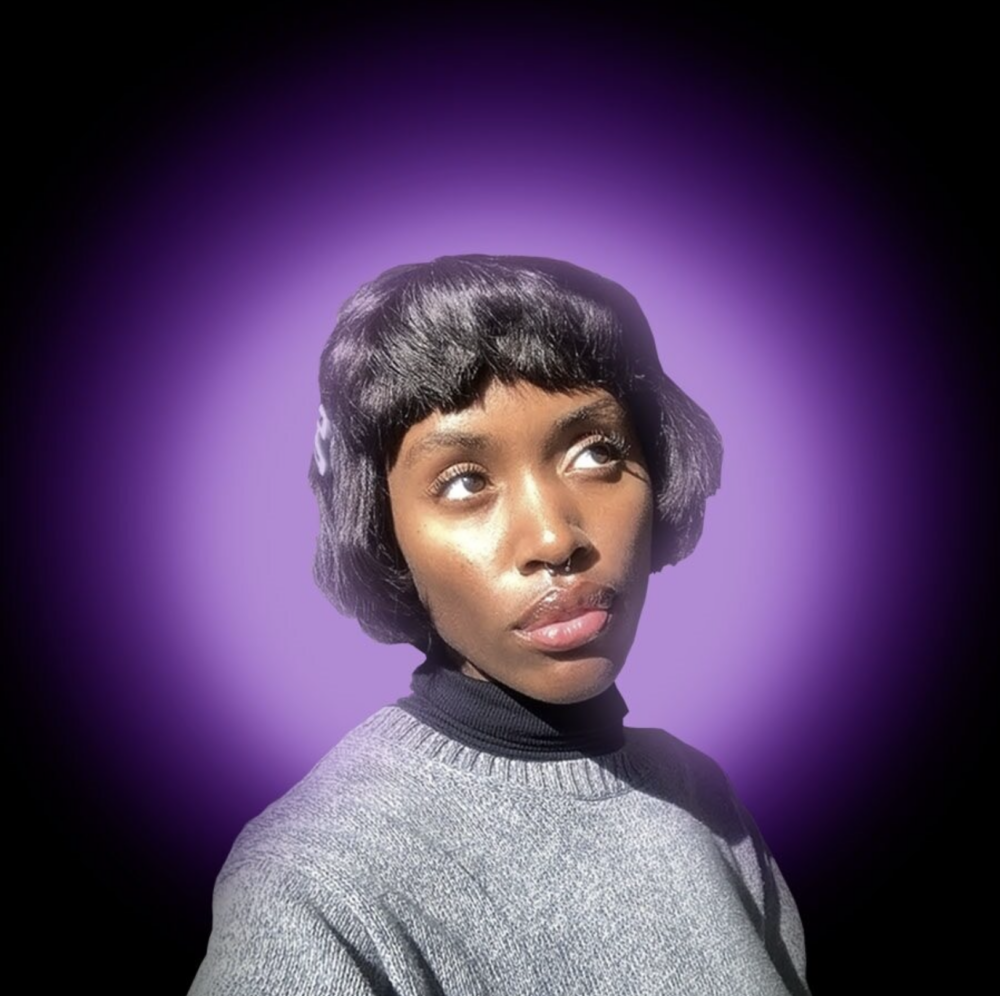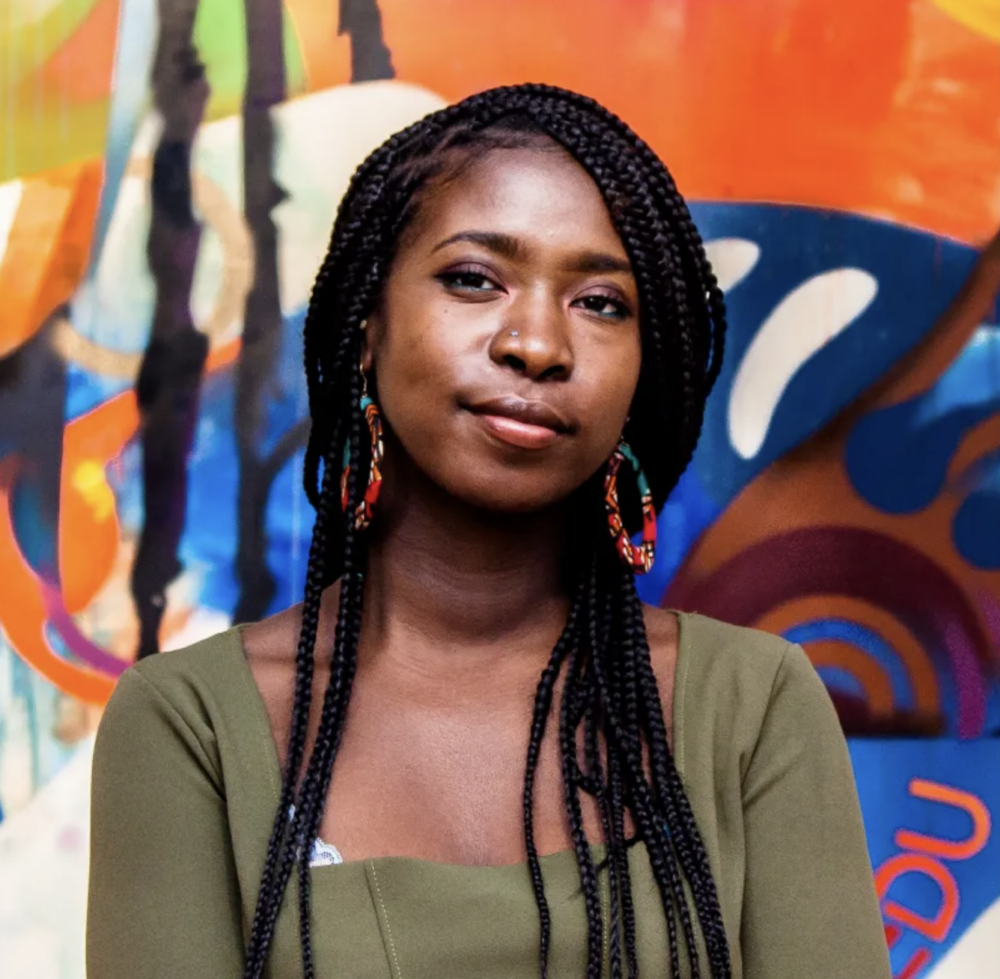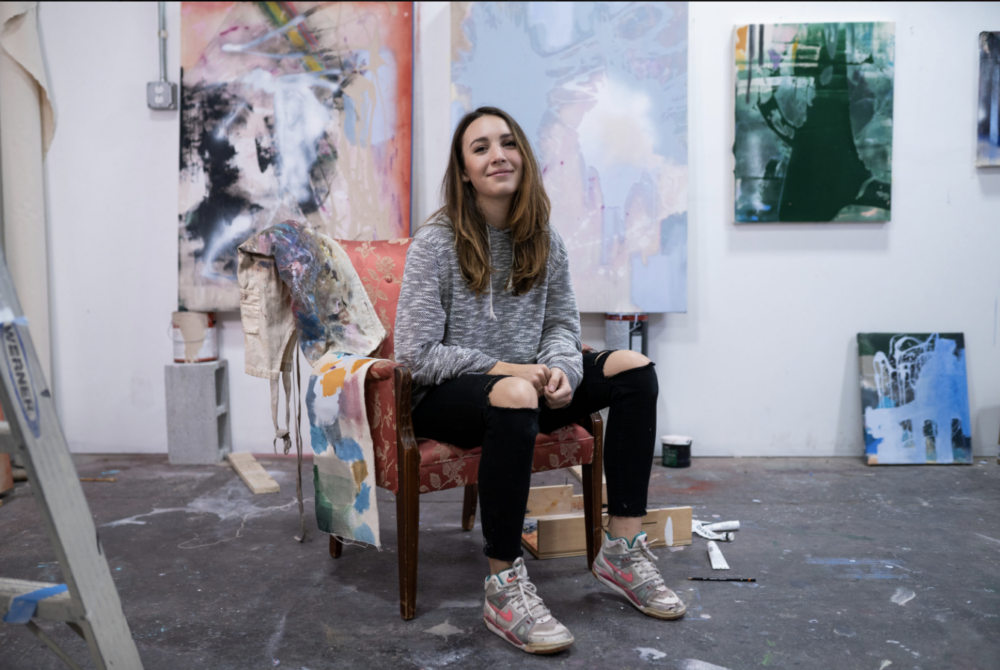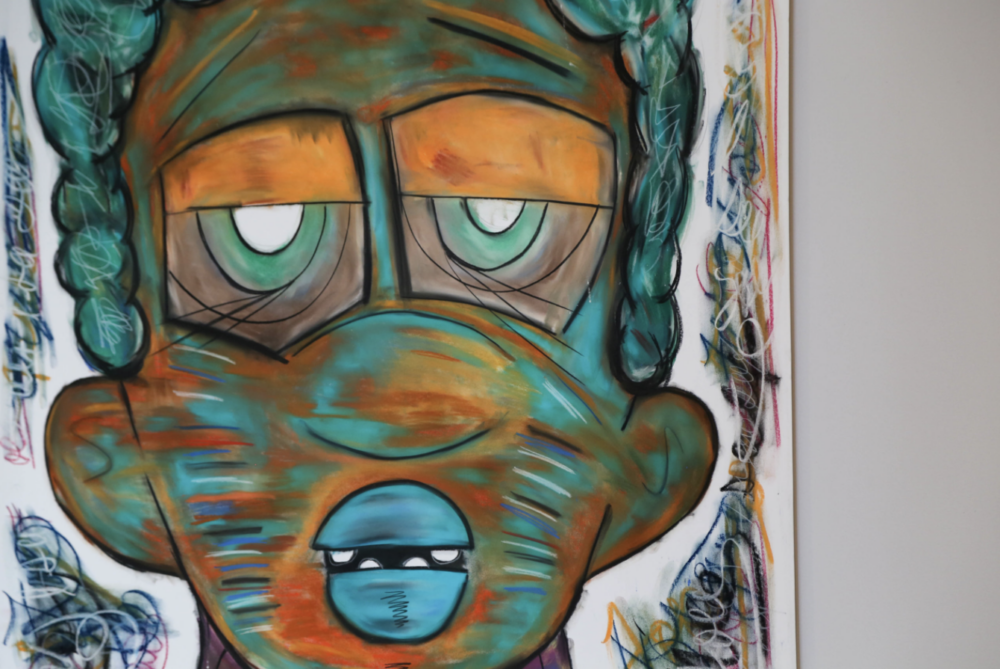Kenny Nguyen: Adaptations
September 6, 2024 - March 2, 2025
Mint Museum Uptown
THE MINT MUSEUM IS CLOSED ON 4TH OF JULY. PLEASE VISIT US THIS SATURDAY AND SUNDAY!
September 6, 2024 - March 2, 2025
Mint Museum Uptown
Adaptation is defined as “the process in which a living thing changes slightly over time to be able to continue to exist in a particular environment.”
Kenny Nguyen feels this process materialized within himself, his lineage, and his methodology of making.
Born and raised on a coconut grove in the Bến Tre province of Vietnam, the artist lived a quiet rural life and later moved to the States at the age of 19. This dispersion from his homeland mapped a new internal geography–a subtle double-consciousness that the artist works with– traversing the spiritual and physical, the contemporary and historical.
Thinking of himself as a hybrid, Nguyen merges his cultural traditions and the canon of abstract painting and fiber art in an innovative way. Also, in reverence of ancestors who endured histories of colonization and imperialism by the Chinese and French for hundreds to thousands of years, Nguyen’s work processes diasporic data and illuminates the shifting nature of place and identity as an ode to these transmutative legacies and an exploration of his own creative metamorphosis.
Nguyen’s training in fashion design and painting pair beautifully to realize his distinct practice–one that both deviates from and expands on tradition, one insistent on adapting to change to find beauty and break barriers.
Mint Museum Uptown
Constellation CLT
Constellation CLT is an exhibition series designed to connect visitors to The Mint Museum with artists in our community, as well as activate the public spaces of the museum.
The installations rotate three times per year and can be seen in five places at Mint Museum Uptown: at the foot of the atrium escalator; on the landings of the Mezzanine and Level 3; and in The Museum Store.
Past Constellation CLT Artists







Fred Smith (b. 1987) is a human navigating their day to day existence through the act of making drawings, paintings, and sculptural objects. Their work is developed with a sense of subversive irony, exploring societal norms and situations that seem off or odd.
By bending physicality and destabilizing reality, Fred Smith’s uncanny creations prompt us to ask complex questions about our surroundings and our imagination. The artist has a similar mission in mind while creating the work, stating that he’s “simply asking questions that I don’t know how to ask with words.” Molding form and spaces into open-ended queries, Smith delivers us to a site where “the world is a stage.”
The improvisational quality imbued throughout his compositions nods at Surrealism—a movement developed in post-war Paris that explored the unconscious, hidden psychological tensions, and dream states. Creative abilities permeated Smith’s immediate family, and he has made drawings since his youth. His practice deepened the summer after eighth grade, he drew constantly from National Geographic and skateboard magazines after an ACL tear forced him to direct his active energy into visual expression. More recently, Smith’s sobriety—he stopped drinking and smoking marijuana in 2020—has strengthened his vigor to make paintings; he observes that “the difference is definitely in the work.” Smith swiftly and successfully cuts through what’s “known” and approaches the absurd as a place to survey the destabilization of certain structures and systems—an illuminated unreality. It is through this choose-your-own-adventure template that we can conceive of new worlds.

Ajané K. Williams’ art is out of this world. Her artist’s statement reveals that she “came to Planet Earth … to show humanity how to find their higher self and travel to the edge of infinity using the power of our own consciousness.”
Naturally curious, Williams immerses herself in the unfamiliar. The self-described “space and time traveler” is a DJ (DJ Nebula), video artist, and Afrofuturist painter. She sees Afrofuturism as “a cultural aesthetic that combines African American culture with futuristic, innovative ideas.”
She finds working in the genre therapeutic and her work is garnering national attention. It was part of the “Black Creativity Juried Art Exhibition” at the Chicago Science and Industry Museum.
“Every time I make something, it’s healing to me as a Black woman [who suffers] from generational and karmic curses from my family lineage. Afrofuturism is healing my Black self, and – I hope – healing humanity,” she says.
Williams was born in 1999 on a military base in Fort Stewart, Georgia and spent her youth in Alaska, both Carolinas, Germany, Japan and Korea. After graduating with a BFA in painting from UNC Charlotte, she moved to Columbia, South Carolina, where she currently lives.
She’s fascinated by UFOs, death, the afterlife, and reincarnation. A related belief is that “children born within your own family might be here to finish something a past family member wasn’t able to complete.”
Such is the case in her family. Her great grandfather, Harvey Williams, was a left-handed painter, as is she. He was a surrealist who painted gospel and jazz album covers. He couldn’t afford to be an artist and support his family, so he gave up art. Williams believes she’s here to fulfill his purpose. Another late relative was a DJ; Williams feels she’s meant to finish his work, too. Here is a look at a day in her life.
Written by Page Leggett. Page Leggett is a freelance writer based in Charlotte. Her work has appeared in TKTKTK.

de’Angelo Dia (American, 1976–). Insomnia 4, 2020, chalk on paper. Courtesy of the artist.
While he has been called a faith leader, an educator, and an artist, de’Angelo Dia prefers the categories poet, theologian, and comic book scholar.
All of these elements can be found in his drawings seen throughout Mint Museum Uptown.
Dia sets his figures in a state of development: their bodies are cocooned, but their heads have blossomed, each with unique features and a distinctive hairstyle. When Dia started the large scrolls, he was writing about people whose evolution–physical and spiritual– was arrested by systemic oppression. Similarly, the characters he draws explore different expressions and elements of African-American culture while not referring to a specific African tradition. The intention, Dia explains, is to recognize the hybrid nature of the culture those from the African diaspora must create in their new lands. Dia writes, “Slavery stripped people of their culture. These drawings celebrate the tenacity of Black and brown people to create a new culture.” This is a process, however. Dia wraps his figures in a chrysalis; in this condition, though they are preserved from harm, they also are not yet free. They are suspended in transition.
Georgie Nakima’s compositions—kaleidoscopes that unite shards of color with a tight contour line—are metaphors for her approach to life and art.
She builds her abstract spaces on a foundation of complicated geometry, revealing her obsession with math. Her blooming plant life, stoic animals, and majestic portraits remind us of the intersectionality of our shared world, one that requires balance between all life forms to thrive as vibrantly as her painted fields. “We live in a world that has thrived on biodiversity,” Nakima observes, “and it’s something that we’re taking away.”
Nakima majored in biology and minored in chemistry at Winston Salem State University. Although trained as a scientist, her vehicle to explore these fields is painting, whether through canvases or murals.
She explains, “When you look at a plant and you look at how it grows, it follows a unique pattern that scales fractals. . . I like to put those patterns into a portrait, because in this world we often separate ourselves from other existing life forms, we see ourselves as living in a society that’s far from nature. I try to bridge it back through visual art.”

Holly Keogh’s work offers rich entry points into abstracted, kaleidoscopic realities–containing domestic scenes, lush environments, overlaid portraits and objects of leisure-depicted in lucid washes, pressed pigment or realistic renderings. Emboldened by saturated palettes, Keogh’s paintings reveal layers and nuance, and in her words, “are a way for me to occupy space and explore personas in a fluid way.” They depict both the inner and outer realms, the abstract and figural, the memory and matter.

Katherine Boxall constructs large-scale canvases that incorporate a ground of lush oil and pastels that explode with saturated color.
Boxall, who completed her MFA at San Francisco Art Institute and moved to Charlotte in the summer of 2018, creates in her west Charlotte studio, a haven for her work with acrylics, spray paint, pastels and oils. She began as a figurative painter. She gradually loosened her lines, breaking down the form of the body into broad expanses and elongated, rounded contours. Since 2018, Boxall has worked primarily in abstraction.

MyLoan Dinh’s sculptures and collages embody her life experiences.
In 1975, she and her mother, father, and brother escaped Vietnam by boat as Saigon fell. Dinh recounts, “For 6 days, we were forbidden to dock because the ships belonged to the now-defunct South Vietnamese government. We were stateless.” Finally, officers on the USS Kirk “followed their moral compass” and allowed them to join their fleet. Thirty former South Vietnamese Navy ships and dozens of cargo and fishing boats “lowered the Vietnamese flag and were given the American one.” With that simple gesture, her homeland was erased and a new one replaced it.
This fragility of homeland, identity, and perceptions around nationality constitute the core of Dinh’s themes. She explores them, along with the systemic racism embedded in countries formed by colonial practices, in poignant works that merge contemporary art traditions and traditional craft methods. Combining utilitarian objects that connote durability—tools, envelopes, life jackets, a passport—with eggshells, embroidery, and fabric, Dinh grapples with the fragility of responsibility, the messiness of hope, and the resilience of committing to personal convictions to find stable ground from which to connect with others.
From there, Dinh proposes, “Despite our differences, together we can negotiate a common goal for a common good.”

Al-Ali developed an affinity for art early on and was inspired by the work of a politically critical Palestinian cartoonist who is his namesake. The nomad-like freedom of his childhood fed his creativity while allowing him to forge new ideas of place and belonging in various pockets of the world. As an artist, Al-Ali thoughtfully conceives of new worlds and employs symbolism imbued by his own sense of belonging, identity, and faith.
Al-Ali observes that his work “started off as paintings and developed meanings.” Though he has never stepped foot in his homeland of Palestine, Al-Ali feels a deep connection to his lineage and roots there. The city of Charlotte also plays a sacred role in his creative life, being the birthplace of his signature Lemonback character described as, “an abstract reflection of the world that we live in.” In addition to Lemonback, which also touches on the lemonback species of pythons, Al-Ali pairs his Free Birds with snake imagery as a symbolic reminder of continual evolution and being grounded on Earth.
Akin to the wind’s guidance of birds as they fly, he lives and works navigated by an intuitive and spiritual source, expressing it as the “Universe telling me how to maneuver.” Through the daintiest of details, seen for example by his working in threes throughout this series, Al-Ali creatively connects to his Islamic-based spirituality and larger purpose. Meticulously attune to the minute elements of each composition, Al-Ali aims to create space for each viewer to dive deeper into their own worlds by working in a manner of simplicity that strokes thought and distinct resonance.


Ongoing
Mint Museum Uptown

October 27, 2023 - October 5, 2025
Mint Museum Randolph